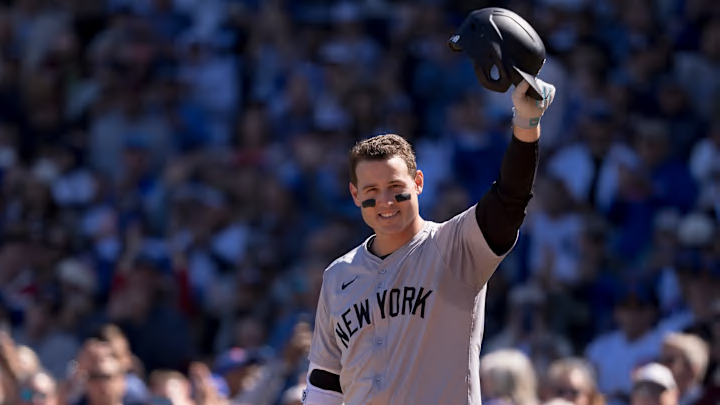Anthony Rizzo officially hung up his cleats on September 10, and while much of baseball is celebrating a decorated career, the San Diego Padres can’t help but feel that familiar sting. For Cubs and Yankees fans, it’s a day of reflection and gratitude for a franchise cornerstone. For Friars fans, it’s another reminder of one of the most lopsided trades in team history.
Rizzo spent only one season in San Diego before the front office decided to move on. Slashing only .141/.281/.242 in 49 games. In January 2012, the Padres dealt Rizzo and pitcher Zach Cates to the Chicago Cubs in exchange for Andrew Cashner and Kyung-Min Na. At the time, it was billed as a swap of promise for immediate pitching help. In hindsight, it became a trade that haunted San Diego for years.
Anthony Rizzo’s retirement brings back sting of one of the Padres’ worst trades
What makes the sting even sharper is that Rizzo wasn’t just any prospect — he was the prized return in the blockbuster deal that sent Adrian Gonzalez, San Diego’s MVP-caliber first baseman, to the Boston Red Sox. The Padres had invested their future in players like Rizzo, only to flip him less than a year later. In the end, Gonzalez thrived elsewhere, Rizzo became a Cubs legend, and the Padres were left empty-handed.
Rizzo wasted no time proving the Padres wrong. In his first season with the Cubs, he hit .285 with 15 home runs in just 87 games. From there, he blossomed into one of the best first basemen of his era:
- Three-time All-Star (2014–2016)
- Four consecutive 30-plus homer seasons (2014–2017)
- Career 133 OPS+ over 14 years
- World Series champion in 2016, ending the Cubs’ 108-year drought
There will only ever be one Anthony Rizzo. pic.twitter.com/d3APSO3QWf
— Chicago Cubs (@Cubs) September 10, 2025
By the time his career wrapped, Rizzo posted a .261 batting average with 303 home runs, 965 RBIs, and 40.4 WAR. For comparison, Andrew Cashner managed just 3.2 WAR across five seasons in San Diego.
As if that weren’t enough, Rizzo seemed to save some of his best swings for his old team. In 59 career games against the Padres, he slashed .301/.382/.502 with 8 home runs and 32 RBIs, good for a 137 wRC+. Every time Rizzo torched Padres pitching, it was like rubbing salt in a wound that never fully healed.
Of course, Padres fans know this story all too well. Rizzo isn’t the only talent the organization has watched thrive elsewhere. It’s practically a rite of passage at this point — see: Max Fried, Trea Turner, James Wood, and countless others.
But here’s the thing: 2025 isn’t 2012. The Padres of today aren’t the same small-market club that shuffled stars out the door only to fade into irrelevance. They’ve spent big, developed better, and built a roster that consistently hovers in contention. The scars from Rizzo’s departure are still there, but they’ve helped shape a front office that understands the cost of undervaluing talent.
So yes, Rizzo’s retirement stings. It reminds Padres fans of the one who got away, a star first baseman they’ve been chasing ever since. But it also serves as a marker of how far the franchise has come. The Padres no longer live in fear of their own mistakes. They’re finally learning from them.
And maybe that’s the best tribute Padres fans can offer Rizzo: his career serves as the reminder that the mistakes of the past don’t have to be repeated.
